巴西电商公共数据分析
巴西公共电商数据共包含9张数据表,包含2016年至2018年,产生的订单数据,数据有十万条数据一、数据基本情况。
一、数据基本情况
巴西公共电商数据共包含9张数据表,包含2016年至2018年,产生的订单数据,数据有十万条数据
一、 数据基本情况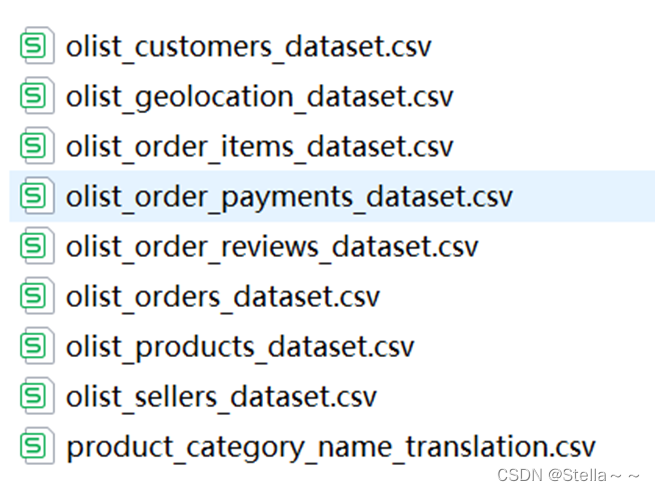
具体数据集含义:
| 表名 | 解释 |
|---|---|
| Olist_customers_dataset | 客户及其位置信息 |
| Olist_geolocation_dataset | 巴西邮政编码及其经纬度坐标信息 |
| Olist_order_items_dataset | 每个订单中购买的商品的数据 |
| Olist_order_payments_dataset | 订单付款的数据 |
| Olist_order_reviews_dataset | 客户所作评论数据 |
| Olist_orders_dataset | 订单交易数据 |
| Olist_products_dataset | 产品数据 |
| Olist_sellers_dataset | 完成订单的卖家的数据 |
| Olist_category_name_translation | 将商品从葡萄牙语转换为英语 |
二、数据清洗
使用python导入数据,查看数据中的缺失值,确定数据中的缺失值是否是重要的字段,若是补全,若不是,无影响可删除,或者忽略即可
格式检查,为了后续操作顺利,检查字段中的格式是否一致,不一致需要更改
去重,对于重复字段可以去重,去重一般在数据清洗之后进行,避免因为格式问题导致遗漏
查看数据表中数据基本情况
客户基本信息表(包含字段:订单对应的客户id,用户唯一id,客户所在地邮编号码,客户所在城市,所在州)
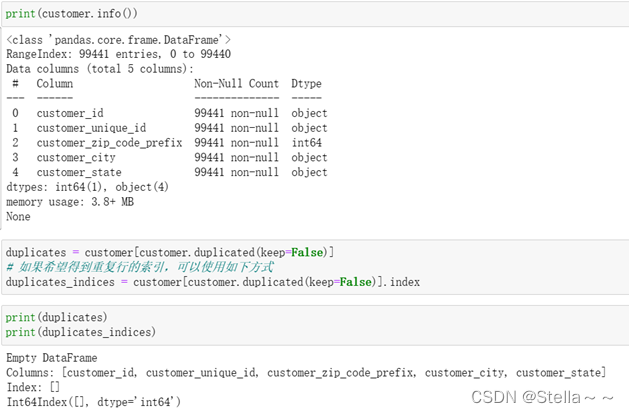
客户基本信息表包含99441条数据,5个字段,没有缺失值,没有重复行,通过统计平台中用户的唯一id
订单表(包含字段:订单id,产品识别同一订单中包含的项目数,商品id,商家id,卖家发货限制日期,商品价格,运费)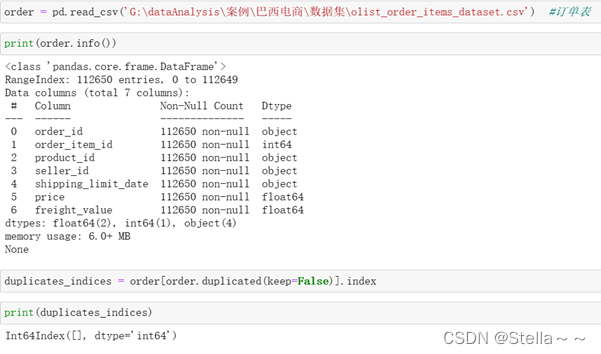
订单表共包含112650条数据,无重复值,无缺失值
支付表(包含字段:订单id,付款顺序,付款方式,客户选择分付款数量,交易金额)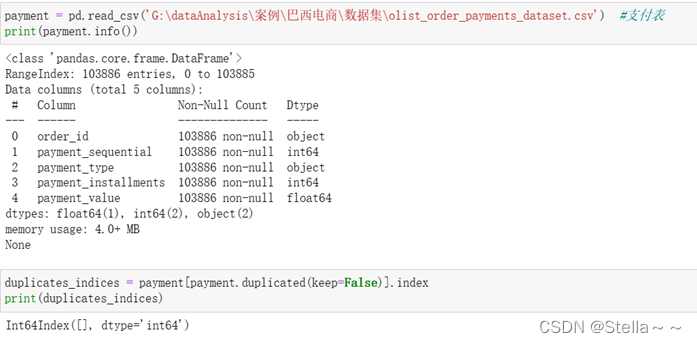
支付表中共103886条字段,无缺失值
评价表(包含字段:订单id,评价id,评价得分,评价标题,评价内容,发出满意度调查时间,客户满意度回复日期)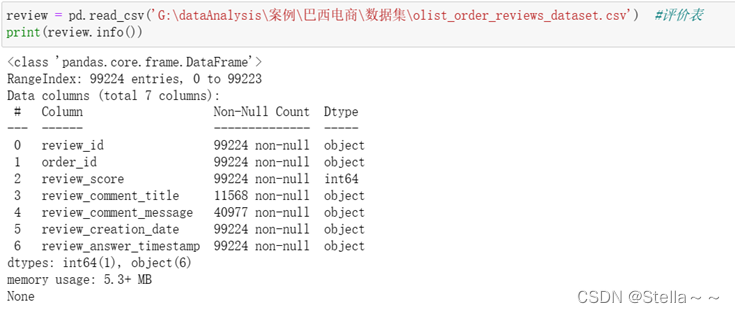
评价表中共包含99224条数据,其中评价标题和评价内容存在空值
订单交易数据(包含字段:包含订单id,订单对应的用户id,订单状态,下单时间,付款审批时间,订单过款时间,客户实际订单交货日期,订单预计交货日期)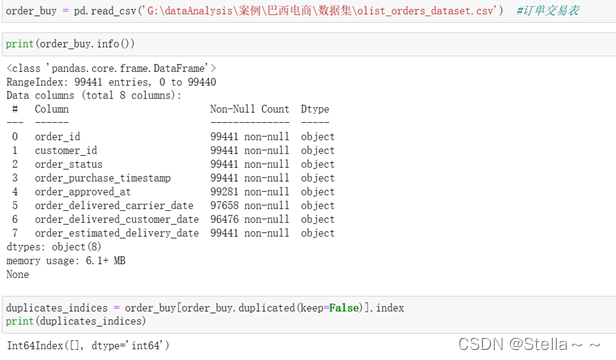
订单交易表中共包含99441条数据,其中订单审批时间,订单过款时间,客户实际订单交货日期存在缺失值
产品数据(包含字段:商品id,类别名称,产品名称长度,产品说明长度,产品招聘数量,产品重量,产品长度,产品高度,产品宽度)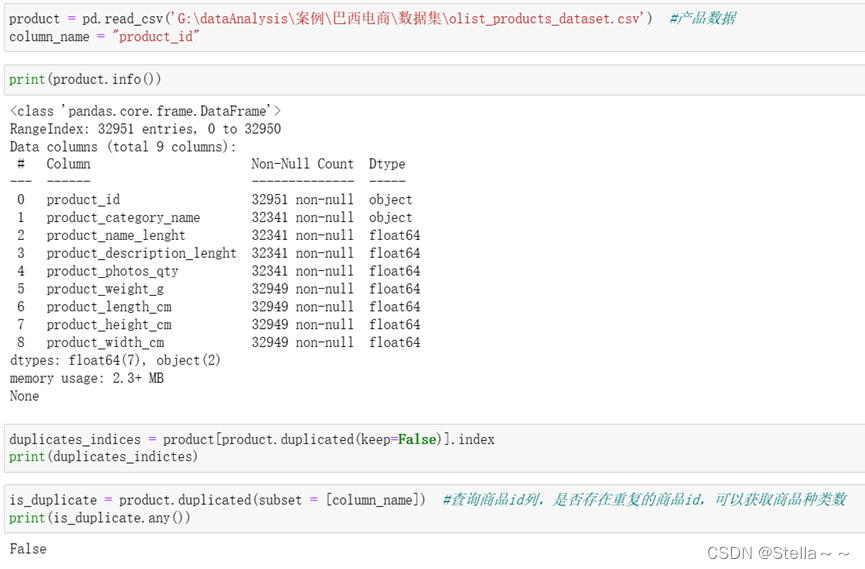
数据集中共包含32951条数据,除产品id外其余数据全部存在缺失值
商家数据(包含字段:商家id,商家所在地邮编号码,商家所在城市,所在州)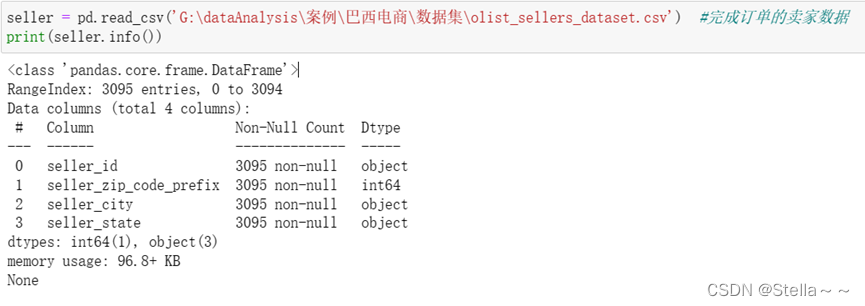
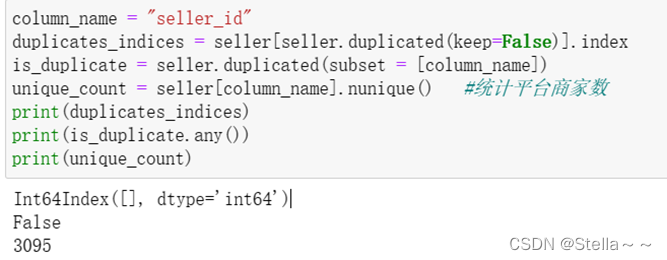
数据集一共包含3095条数据,无缺失值,无重复值
将商品从葡萄牙语转换为英语
3.建立指标
按照“人”,“货”,“场”建立指标,如下: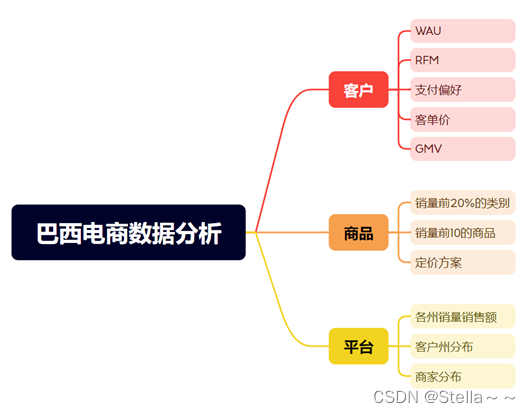
4.可视化分析
4.1 客户
支付偏好
select count(payment_type),payment_type
from olist.olist_order_payments_dataset
group by payment_type ;
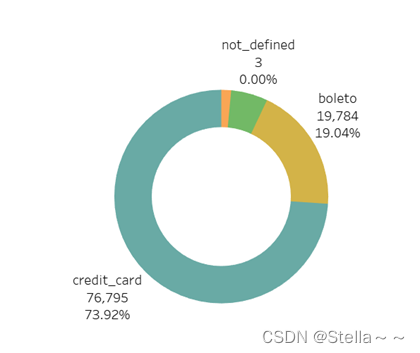
该平台客户的支付时喜欢信用卡和boleto支付(打印boleto小票,再到合作机构现金支付,类似线下“花呗”),结合客户占比及州单量和销售额占比,平台可以在SP,RJ,MG州结合用户的支付偏好,和相关支付平台合作策划促销活动
DAU
select count(distinct tt1.customer_unique_id) as DAU,tt1.paytime,tt1.customer_state
from (
select t1.customer_id, t1.order_status, t1.order_id, t1.paytime, t2.customer_unique_id,t2.customer_state
from (
select customer_id, substr(order_purchase_timestamp, 1, 10) paytime, order_id, order_status
from olist.olist_orders_dataset
where order_status in (‘delivered’, ‘invoiced’, ‘shipped’, ‘processing’, ‘created’, ‘approved’)
) t1
left join
(
select customer_id, customer_unique_id,customer_state
from olist.olist_customers_dataset
) t2
on t1.customer_id = t2.customer_id
) tt1
group by tt1.paytime,tt1.customer_state
order by tt1.paytime;
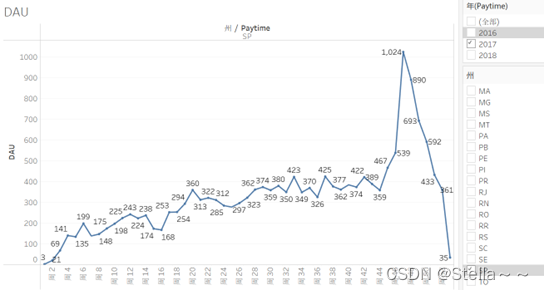
该平台WAU变化波动大,上图为SP州WAU,该平台用户活跃度变化较大
客单价
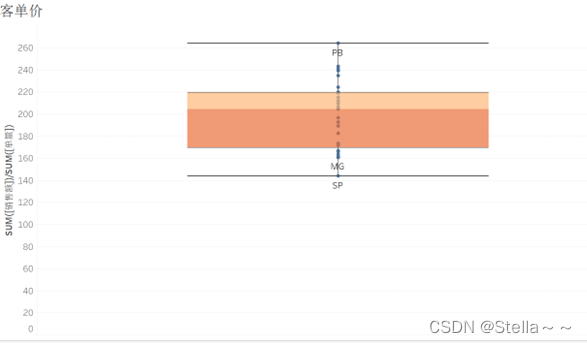
采用箱线图可视化客单价,从中可以看出SP,MG等州的客单价最低
GMV
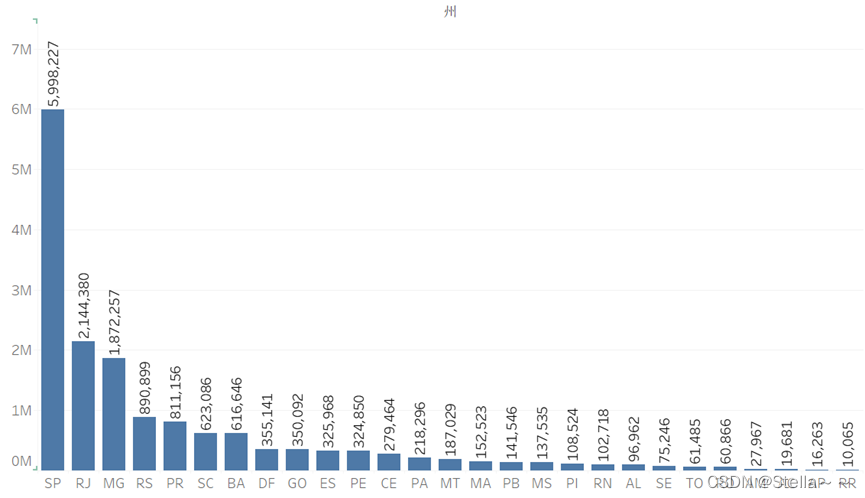
RFM
select c.customer_unique_id,a.order_id,b.payment_value,substr(a.order_purchase_timestamp,1,10)
from olist.olist_orders_dataset a
left join olist.olist_order_payments_dataset b on a.order_id = b.order_id
left join olist.olist_customers_dataset c on a.customer_id = c.customer_id
计算字段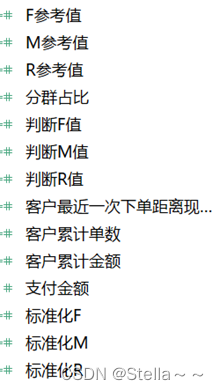
首先根据RFM对三个值的定义,计算RFM,在RFM模型中需要评分,需要将RFM标准化,采用归一化,即X = X-Xmin / Xmax -Xmin ,还需要设置RFM的参考值,将中位数设置为参考值,将标准化的RFM值和RFM的参考值对比大小,最后根据RFM对客户的划分,将客户划分为8类,逻辑如下: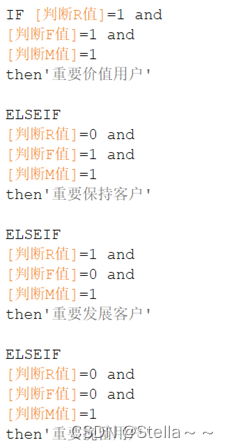
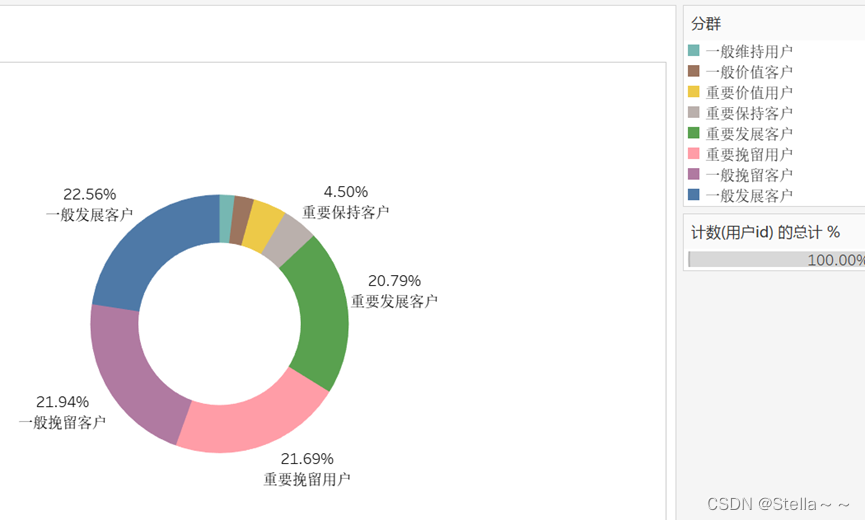
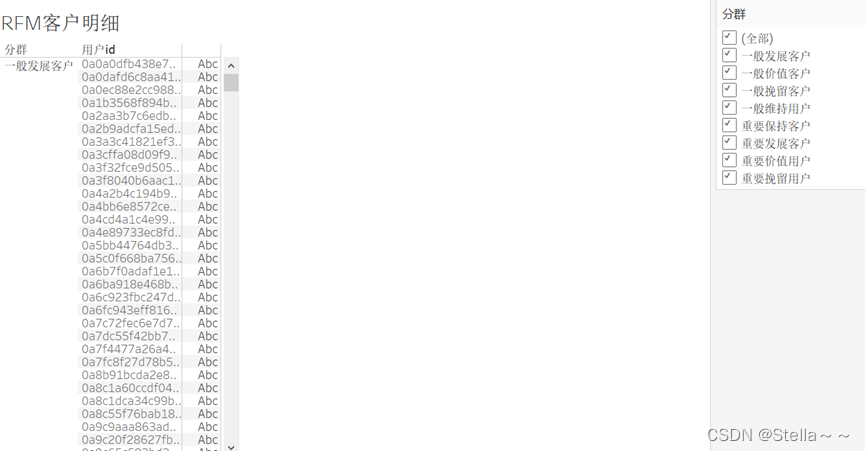
制定策略:
制定策略:对于重要价值客户,重要挽留客户,重要发展客户,因为其在平台产生过高额消费,可以制定相关的促销打折活动,进行客户召回
对于重要保持客户,一般保持客户,一般挽留客户,需要在控制运营成本内的适当展开促销,实现召回
对于其他的两种客户,因价值低,可在有多余的营销费用时进行召回
4.2商品
类别前20%销售额销量
– 查类别前20%销售额和销量
with df_1 as (
select t1.product_category_name,
sum(t2.payment_value) GMV,
count(t2.order_id) count_order,
dense_rank() over (order by sum(t2.payment_value) desc) rk
from (
select product_id, product_category_name
from olist.olist_products_dataset
) t1
left join
(
select a.product_id,
– a.price,
a.seller_id,
b.payment_value,
b.order_id
from olist.olist_order_items_dataset a
left join olist.olist_order_payments_dataset b on a.order_id = b.order_id
) t2
on t1.product_id = t2.product_id
group by t1.product_category_name
)
select * from df_1
where df_1.rk <=
( select max(rk) from df_1) * 0.2
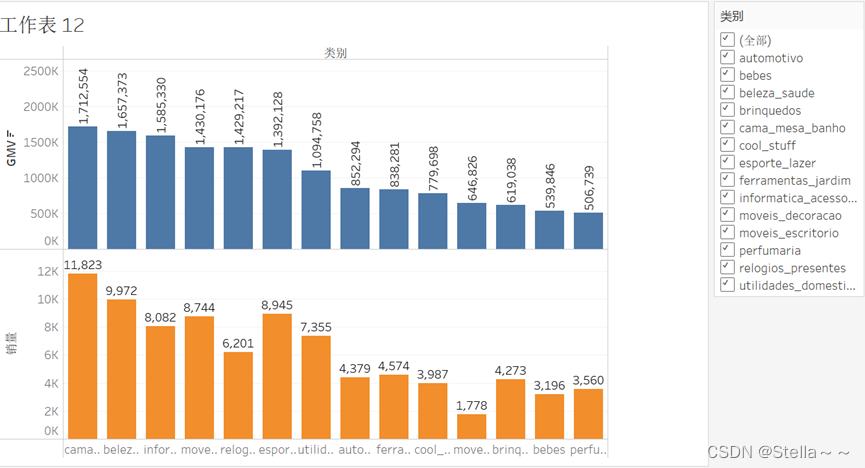
在前20%的品类中,cama_mesa_banho(生活用品)的销售额和销量是最高的
前20种产品销量销售额
– 因产品种类多,取1%仍有244种商品,因此取前20种
select t1.product_category_name,
select t1.product_id,
sum(t2.payment_value) GMV,
count(t2.order_id) count_order,
dense_rank() over (order by sum(t2.payment_value) desc) rk
from (
select product_id, product_category_name
from olist.olist_products_dataset
) t1
left join
(
select a.product_id,
– a.price,
a.seller_id,
b.payment_value,
b.order_id
from olist.olist_order_items_dataset a
left join olist.olist_order_payments_dataset b on a.order_id = b.order_id
) t2
on t1.product_id = t2.product_id
group by t1.product_category_name
group by t1.product_id
limit 20;
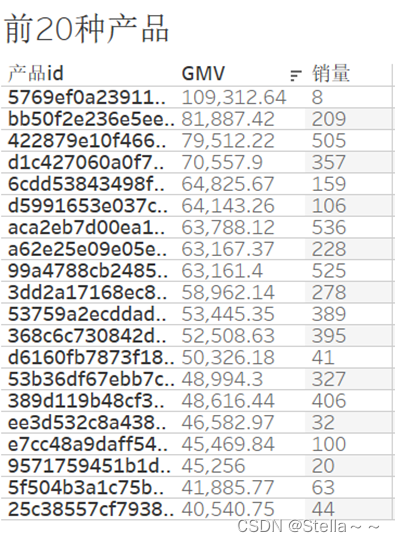
相关性分析
销量与评分
with df_1 as
(
select count(distinct tt1.order_id) 销量
, tt1.review_score
, tt1.seller_id
, tt1.product_category_name
, rank() over (order by count(distinct tt1.order_id) desc) rk
from (
select t1.order_id,
t1.product_id,
t1.seller_id,
t1.price,
t1.review_score,
t2.product_category_name
from (
select a.order_id, b.review_score, product_id, c.seller_id, c.price
from olist.olist_orders_dataset a
left join olist.olist_order_reviews_dataset b on a.order_id = b.order_id
left join olist.olist_order_items_dataset c on a.order_id = c.order_id
) t1
left join
(
select product_id, product_category_name
from olist.olist_products_dataset
) t2
on t1.product_id = t2.product_id
) tt1
group by tt1.review_score, tt1.product_category_name, tt1.seller_id
)
select df_1.product_category_name,df_1.seller_id,df_1.销量
,sum(case when df_1.review_score = 5 then 1 else 0 end) five
,sum(case when df_1.review_score = 4 then 1 else 0 end) four
,sum(case when df_1.review_score = 3 then 1 else 0 end) three
,sum(case when df_1.review_score = 2 then 1 else 0 end) two
,sum(case when df_1.review_score = 1 then 1 else 0 end) one
,row_number() over (partition by df_1.product_category_name order by df_1.price desc) as rk
from df_1
where df_1.rk <= (select max(rk) from df_1) * 0.2
group by df_1.product_category_name,df_1.销量,df_1.seller_id ;
销量与评分的相关性分析(python)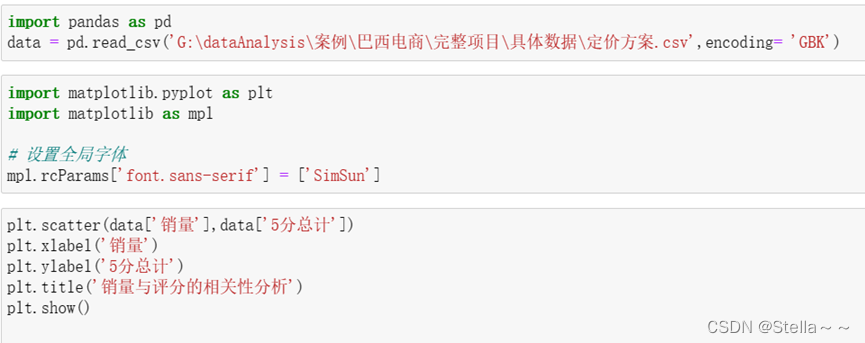


相关系数:销量和评分的相关系数: 0.3777695162799676
两个变量之间存在一定的正向相关性,但是相关性弱
销量与定价
销量与定价的相关性(python)
select count(distinct tt1.order_id) 销量
, tt1.seller_id
, tt1.price
, tt1.product_category_name
, rank() over (partition by tt1.seller_id,tt1.product_category_name order by tt1.price desc) rk
from (
select t1.order_id,
t1.product_id,
t1.seller_id,
t1.price,
t1.review_score,
t2.product_category_name
from (
select a.order_id, b.review_score, product_id, c.seller_id, c.price
from olist.olist_orders_dataset a
left join olist.olist_order_reviews_dataset b on a.order_id = b.order_id
left join olist.olist_order_items_dataset c on a.order_id = c.order_id
) t1
left join
(
select product_id, product_category_name
from olist.olist_products_dataset
) t2
on t1.product_id = t2.product_id
) tt1
group by tt1.product_category_name, tt1.seller_id,tt1.price
python计算中位数(因均值容易受极值影响,所以使用中位数来计算价格)
关联分析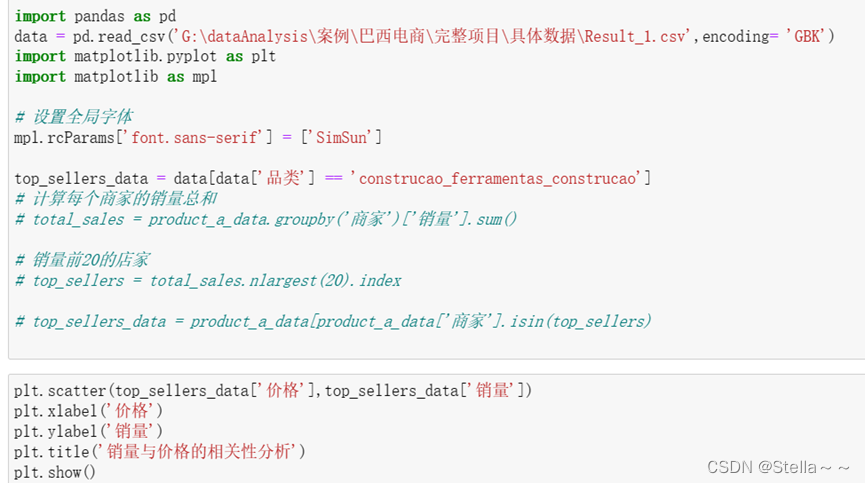
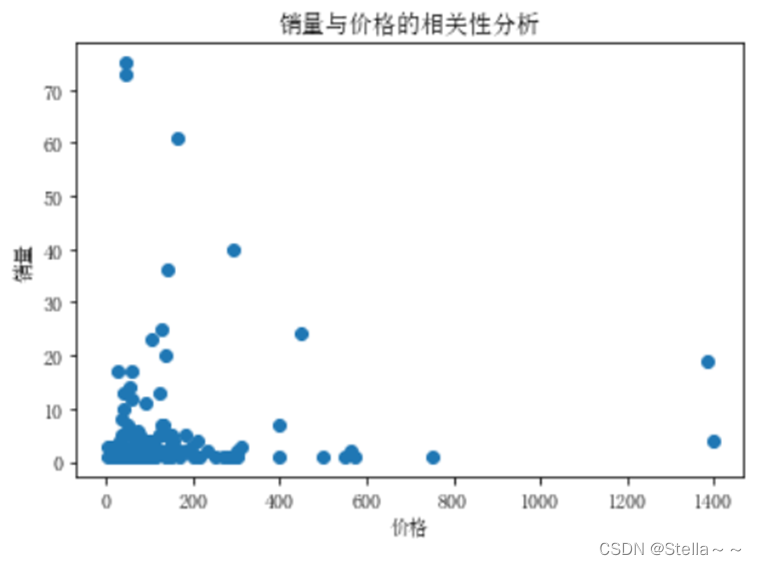

相关性较弱,可以参考销量高商家的定价,但仍需结合具体的市场情况
4.3 平台
客户州分布
select count(distinct customer_unique_id) as count_id
, customer_state
from olist.olist_customers_dataset
group by customer_state
order by count_id desc;
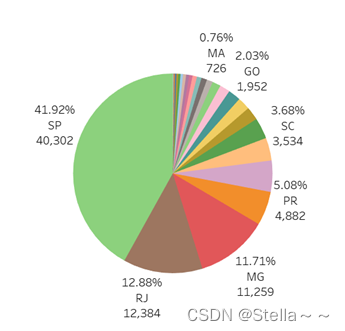
排名前三的是SP(圣保罗州),RJ(里约热内卢州),MG(米纳斯吉拉斯州),占比达66.51%,是主要的客户来源
商家州分布
select count(distinct seller_id) as count_shop,seller_state
from olist.olist_sellers_dataset
group by seller_state
order by count_shop desc;
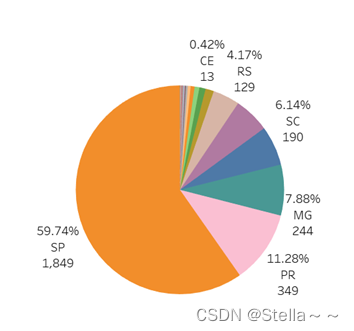
排名前三的是SP,PR(巴拉纳州),MG,占比达78.9%,在客户分布中,RJ州占比达12.88%,排序第2,但商家占比排序第5,仅5.53%
各州销售额销量排行
select count(distinct a.order_id) 单量,sum(a.payment_value) 销售额,c.customer_state 州
from olist.olist_order_payments_dataset a
left join olist.olist_orders_dataset b on a.order_id = b.order_id
left join olist.olist_customers_dataset c on b.customer_id = c.customer_id
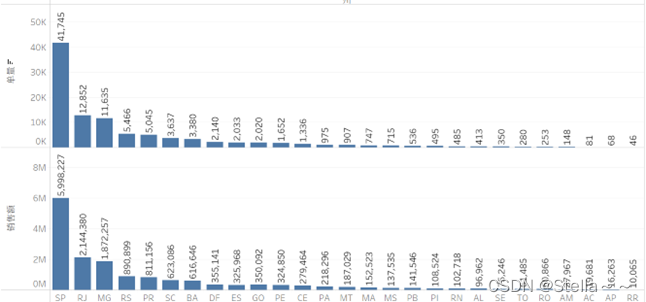
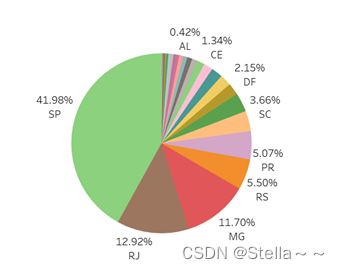
单量州分布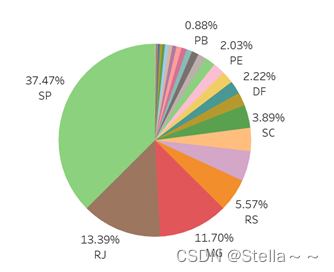
占比前三的仍是SP,RJ,MG州,这三个州的占比是主要的销量来源,可多次策划相关活动
更多推荐
 已为社区贡献1条内容
已为社区贡献1条内容









所有评论(0)